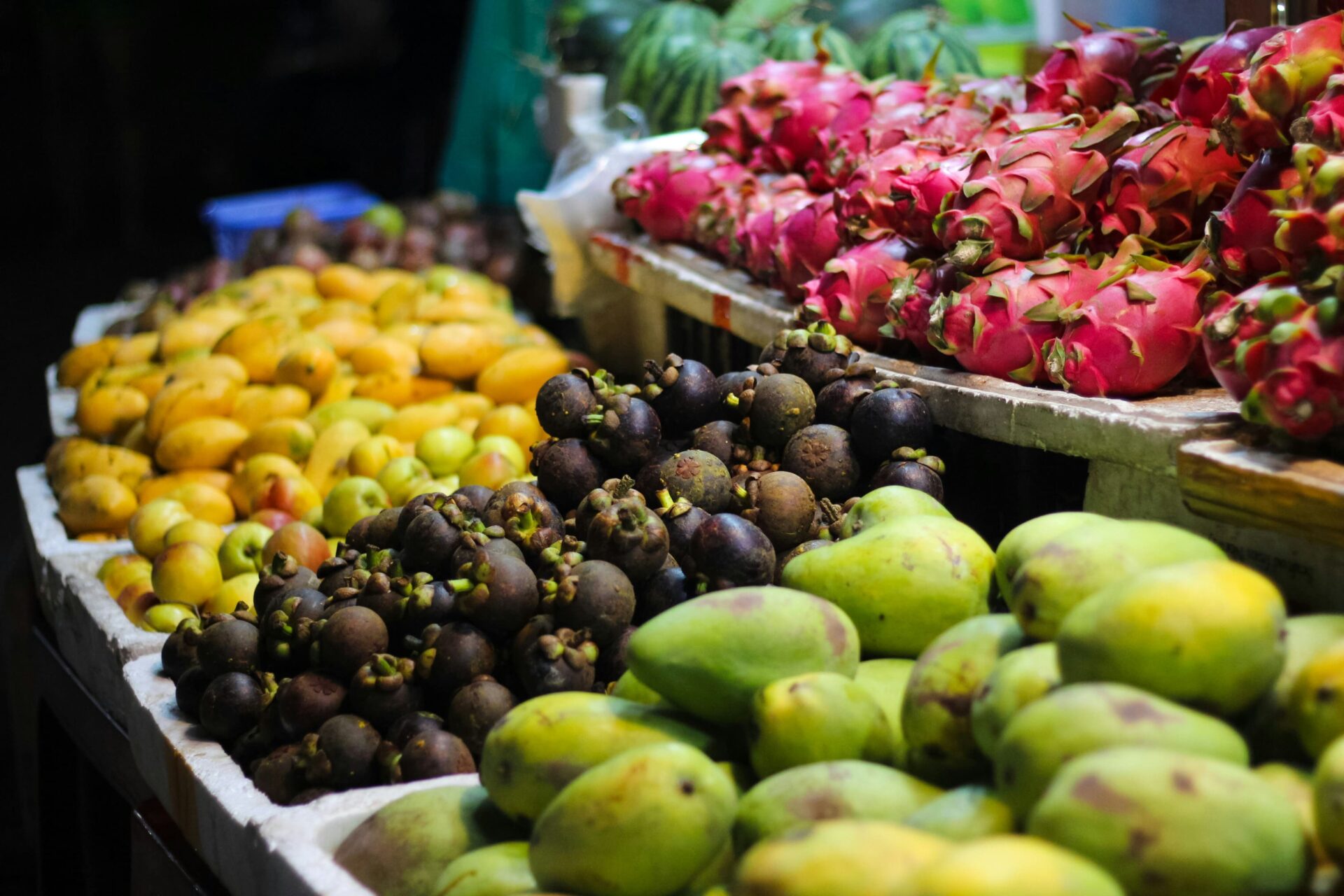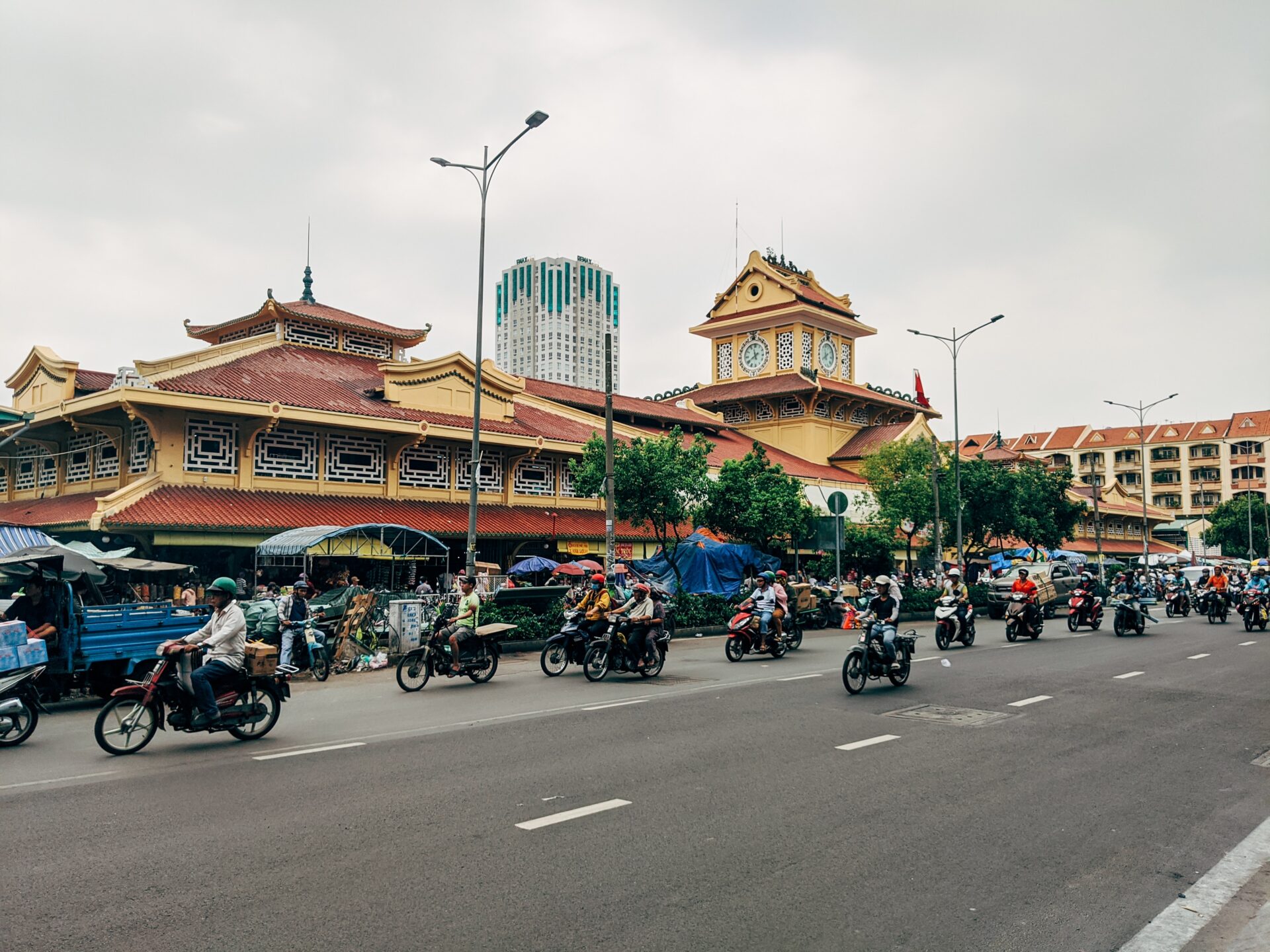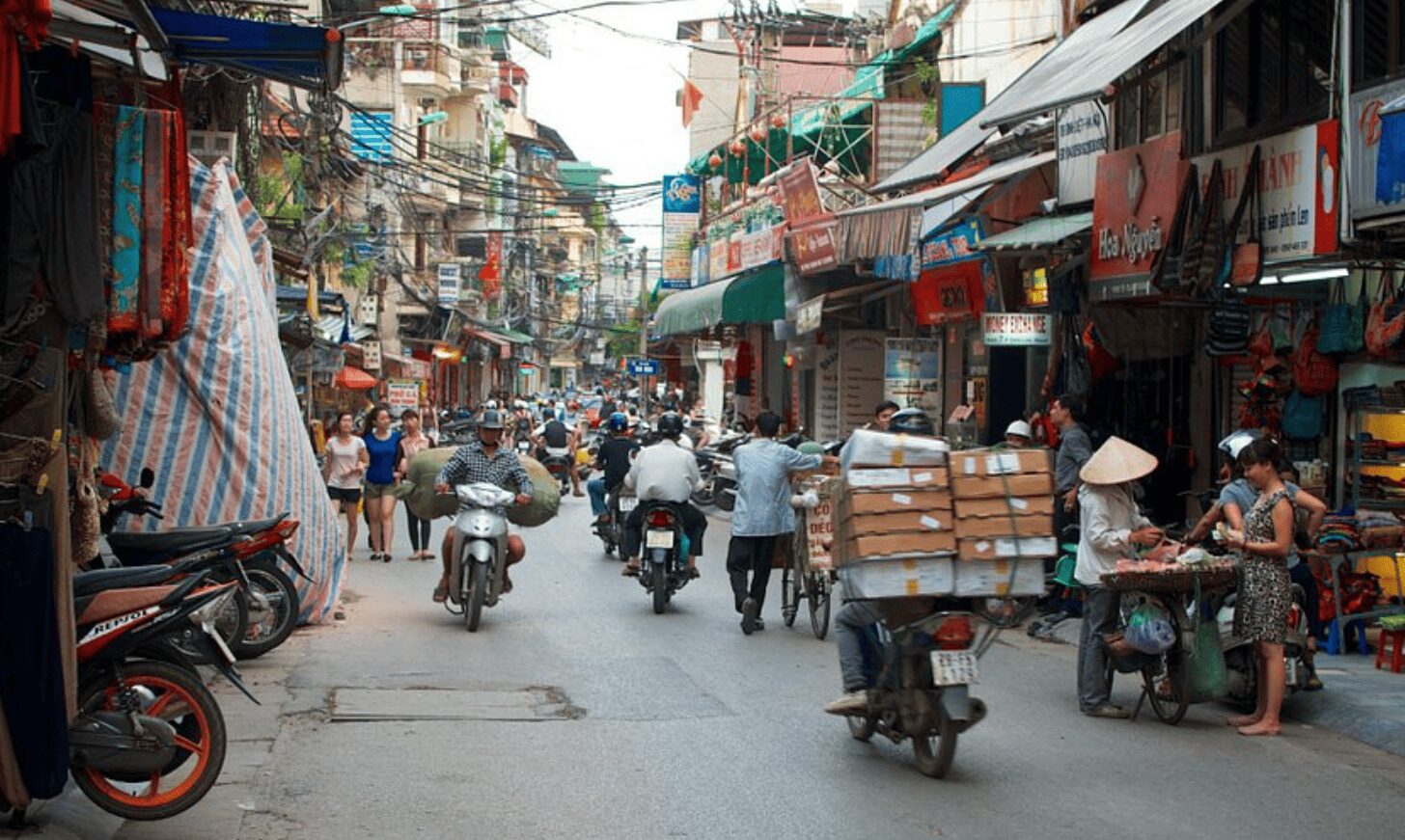The Bounty of the Tropics: The Charm and Enjoyment of Vietnamese Fruits

Vietnam, blessed with rich nature and a warm climate, is a treasure trove of diverse fruits. Fresh and sweet fruits are available year-round in markets and street stalls. In this article, we will introduce representative Vietnamese fruits, explaining their characteristics and how to enjoy them. When traveling to Vietnam, be sure to savor the local fruits.
目次
1. Durian: The King of Fruits
Durian, known as the “king of fruits,” is famous for its distinctive smell. Encased in a spiky green shell, it reveals creamy, sweet flesh inside. While its intense aroma can be challenging for first-timers, those who develop a taste for durian often become addicted to its unique flavor. In Vietnam, durian has its season and is primarily cultivated in the Mekong Delta region. Besides fresh durian, you can find durian ice cream, durian candies, and more in the markets.
Durian is highly nutritious, rich in vitamin C, B vitamins, potassium, and dietary fiber, making it beneficial for boosting immunity and enhancing beauty. However, it is also high in calories, so moderation is advised. If you wish to try durian during your trip, it is best to purchase it from street vendors or specialty stores. Be aware that due to its strong odor, many hotels and public places prohibit bringing durian inside.
2. Mango: Sweet and Juicy Delights
Mango is one of Vietnam’s signature fruits, known for its sweet and juicy flesh. Vietnamese mangoes come in various types, differing in color, shape, and taste. Notably, the “Cá Xoài Hòa Lộc” variety is famous for its exceptional sweetness and fragrance. Mango can be enjoyed fresh, in salads, smoothies, and desserts.
Vietnam offers a wide range of mango-based desserts, such as mango cheesecake, mango ice cream, and mango sticky rice. Mangoes are rich in vitamins A and C and dietary fiber, contributing to health maintenance and skin benefits. When traveling, make sure to savor the local mangoes and experience their delightful taste.
3. Rambutan: Unique in Appearance and Taste
Rambutan, with its red, hairy appearance, is a unique fruit. Inside, it contains juicy, translucent flesh with a sweet and slightly tangy flavor. Rambutan is commonly found in Vietnamese markets and fruit stands, and its distinctive look makes it popular among tourists.
Rambutan is rich in vitamin C, iron, and calcium, making it a highly nutritious fruit. Vitamin C boosts immunity, while iron helps prevent anemia. Rambutan is typically eaten fresh but can also be added to fruit salads and desserts for extra color and flavor. Be sure to try this unique fruit during your travels.
4. Dragon Fruit: Beautiful Appearance and Nutritional Value
Dragon fruit is known for its striking pink exterior and is a favorite for its Instagram-worthy appearance. The inside flesh can be white or red, dotted with black seeds. It has a mild flavor with subtle sweetness and a refreshing tartness. Dragon fruit can be enjoyed fresh, in smoothies, salads, and desserts.
Dragon fruit is low in calories and packed with vitamin C, B vitamins, iron, and magnesium. It offers antioxidant properties, contributing to skin health and immune support. Additionally, its high fiber content aids digestion. Easily found in Vietnamese markets and supermarkets, dragon fruit is a must-try during your trip.
5. Mangosteen: The Queen of Fruits
Mangosteen, known as the “queen of fruits,” is loved for its exquisite taste. The fruit has a dark purple rind, and inside, you’ll find white, juicy segments of flesh. It has a sweet and tangy flavor that is unforgettable. Mangosteen is commonly available in Vietnamese markets and fruit stands.
Mangosteen is rich in vitamin C, B vitamins, calcium, and potassium, promoting health and beauty. Its strong antioxidant properties help prevent skin aging and boost immunity. Mangosteen is usually eaten fresh but can also enhance fruit salads and desserts. Enjoy this delicious fruit during your travels.
Conclusion
Vietnamese fruits, with their variety and deliciousness, are loved by many. Alongside the café culture inherited from the French colonial era, Vietnamese fruits have their unique charm. During your trip, be sure to explore local markets and fruit stands to experience the diverse flavors of Vietnamese fruits. You will surely be delighted by their rich tastes and nutritional benefits.
(Photo by Unsplash.com)



